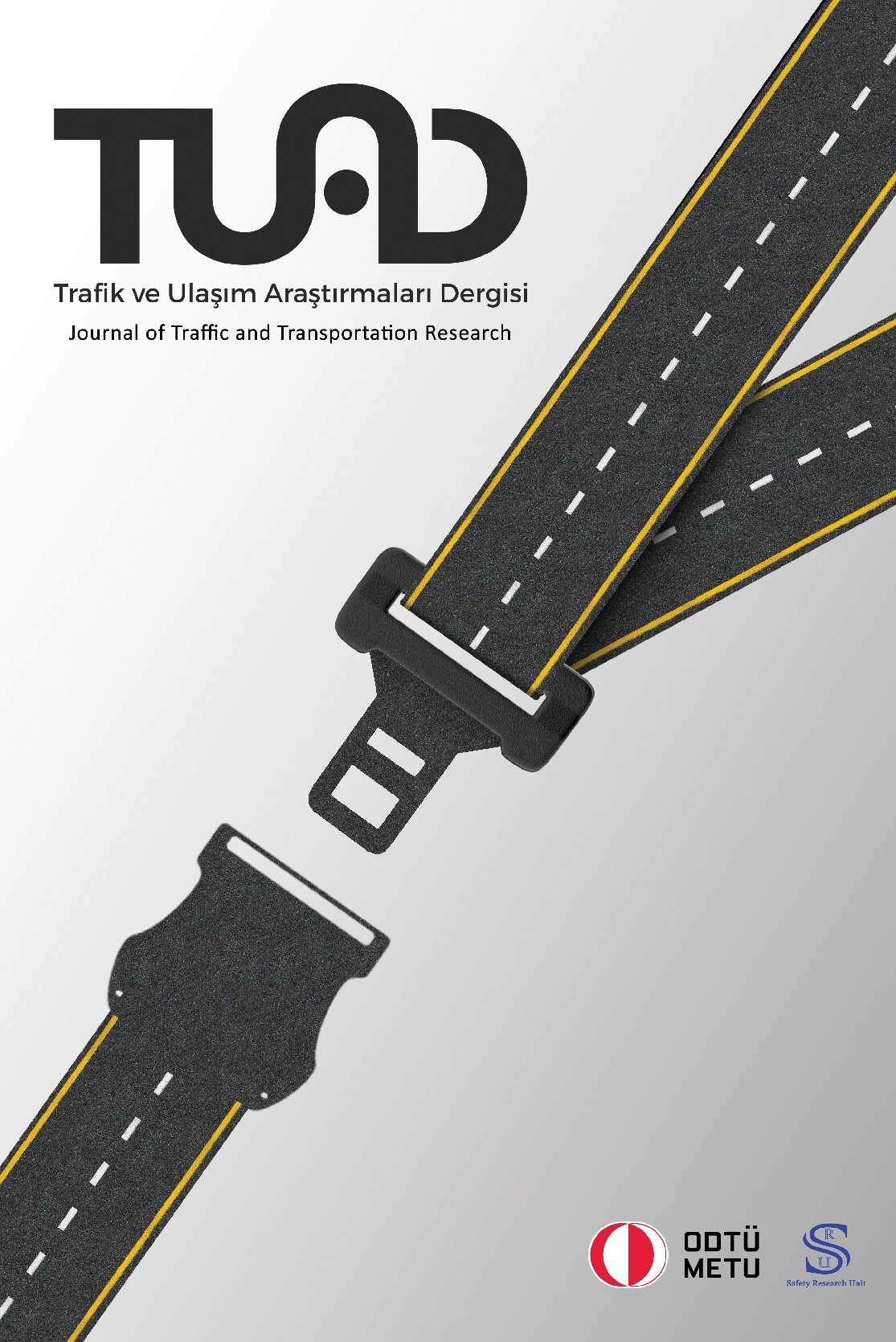Sürücüsüz Araçların İlk Ölümlü Kazalarından Biri: 2016 Tesla S 70D Kazasının Kök Neden Analizi
Son teknolojik gelişmeler, sürücüsüz araçların ve Gelişmiş Sürücü Destek Sistemleri (ADAS) bulunan araçların karayolu trafiğindeki yaygınlığını artırmıştır. Bunun bir sonucu olarak, sürücüsüz araçların kullanımı için güvenlik açısından kritik endişeler ortaya çıkmaktadır. Bu çalışma, bir TIR kamyonunun römorku ile SAE 2. Seviye otonom Tesla Arabası arasındaki bir çarpışmayı ele almıştır. Oto pilot fonksiyonuyla seyir halinde olan 40 yaşındaki Tesla sürücüsü, çarpışmadan önce herhangi bir kaçınma hareketi yapmadan römorkun orta kısmına tüm hızıyla çarparak römorkun altından geçmiş ve ilk çarpmanın etkisiyle yaşamını yitirmiştir. Kazaya sebebiyet veren İnsan Hatası ve Ekipman Arızası faktörleri, kök neden analizinin belirli araçları kullanılarak analiz edilmiştir. Bunlar sırasıyla Beş Neden Tekniği ve Bariyer Analizidir. Gerçekleştirilen bu analizler, sürücüsüz araçları kullanırken durumsal farkındalığın önemini vurgulamış, ADAS'ın güvenlik bariyeri fonksiyonlarının başarısız olabileceğini ve bu sistemlere gereğinden fazla güvenilmemesi gerektiğini göstermiştir. Sürücüsüz sistemlere aşırı güvenmenin olası nedenleri tartışılmış ve otomatikleştirilmiş araç sürücülerinin güvenliğini hedefleyen önerilerde bulunulmuştur.
Anahtar Kelimeler:
kök neden analizi, sürücüsüz araç, vaka analizi, ADAS, Tesla Model S 70D
One of the First Fatalities of a Self-Driving Car: Root Cause Analysis of the 2016 Tesla Model S 70D Crash
The recent technological developments have increased the prevalence of automated vehicles and vehicles with Advanced Driver Assistance Systems (ADAS) within the roadway traffic. Consequently, different safety-critical concerns rise for the usage of self-driving vehicles. The present study has investigated a crash between a semi-trailer of a Freightliner Truck and an SAE Level 2 automated Tesla Car. Operated during the autopilot mode engaged, the 40-year-old Tesla Driver hit and traveled under the mid aspect of the semi-trailer without taking any evasive actions prior to the crash and instantly deceased after the initial impact. The contributory factors of Human Error and Equipment Failure have been analyzed using specific tools of the root cause analysis: Five Whys Technique and Barrier Analysis respectively. The analysis has emphasized the importance of situational awareness while driving automated vehicles and showed that safety barrier features of ADAS may fail and should not be over-relied. The potential reasons to over-rely automated systems were discussed, and recommendations that target the safety of automated vehicle drivers have been made.
Keywords:
root cause analysis, automated vehicle, case analysis, ADAS, Tesla Model s 70D,
___
- Ammerman, M. (1998). The root cause analysis handbook: A simplified approach to identifying, correcting and reporting workplace errors. New York: Quality Resources
- Crash Research & Analysis, Inc. (2018, January). Special crash investigations: On-site automated driver assistance system crash investigation of the 2015 Tesla model S 70D (Report No. DOT HS 812 481). Washington, DC: National Highway Traffic Safety Administration.
- Fitch, G. M., Bowman, D. S., & Llaneras, R. E. (2014). Distracted driver performance to multiple alerts in a multiple-conflict scenario. Human Factors, 56(8), 1497–1505. doi:10.1177/0018720814531785
- Jenssen, G. D., Moen, T., & Johnsen, S. O. (2019, October). Accidents with automated vehicles-do self-driving cars need a better sense of self. In Proceedings of the 26th ITS World Congress, Singapore.
- Johns, M., Sibi, S., & Ju, W. (2014, September). Effect of cognitive load in autonomous vehicles on driver performance during transfer of control. In Adjunct Proceedings of the 6th International Conference on Automotive User Interfaces and Interactive Vehicular Applications, Seattle, United States of America (USA). doi: 10.1145/2667239.2667296
- Martínez-Díaz, M., & Soriguera, F. (2018). Autonomous vehicles: Theoretical and practical challenges. Transportation Research Procedia, 33, 275–282. doi:10.1016/j.trpro.2018.10.103
- McWilliams, T., & Ward, N. (2021). Underload on the road: Measuring vigilance decrements during partially automated driving. Frontiers in Psychology, 12(April), 1–13. doi:10.3389/fpsyg.2021.631364
- National Highway Traffic Safety Administration (NHTSA) (2013). Preliminary statement of policy concerning automated vehicles. National Highway Traffic Safety Administration, Washington DC, National Highway Traffic Safety Administration.
- Peiris, S., Newstead, S., Berecki-Gisolf, J., Chen, B., & Fildes, B. (2022). Quantifying the lost safety benefits of ADAS technologies due to inadequate supporting road infrastructure. Sustainability, 14(4), 2234.
- Poland, K., McKay, M. P., Bruce, D., & Becic, E. (2018). Fatal crash between a car operating with automated control systems and a tractor-semitrailer truck. Traffic Injury Prevention, 19, S153–S156. doi:10.1080/15389588.2018.1532211
- Reimer, B. (2014). Driver assistance systems and the transition to automated vehicles: A path to increase older adult safety and mobility? Public Policy & Aging Report, 24(1), 27-31.
- Rukonic, L., Mwange, M. A. P., & Kieffer, S. (2022). Teaching drivers about ADAS using spoken dialogue: A Wizard of Oz Study. In 6th International Conference on Human Computer Interaction Theory and Applications (HUCAPP).
- SAE On-Road Automated Vehicle Standards Committee (2016). Taxonomy and definitions for terms related to on-road motor vehicle automated driving systems; technical report J3016_201609, SAE International.
- Tafidis, P., Farah, H., Brijs, T., & Pirdavani, A. (2022). Safety implications of higher levels of automated vehicles: a scoping review. Transport Reviews, 42(2), 245-267.
- Trost, W A, & Nertney, R J. (1985). Barrier analysis. Idaho Falls (USA): System Safety Development Center
- ISSN: 2667-8071
- Yayın Aralığı: Yılda 2 Sayı
- Başlangıç: 2018
- Yayıncı: Türker ÖZKAN
Sayıdaki Diğer Makaleler
Üsküdar’da Meydana Gelen Trafik Kazalarının Coğrafi Bilgi Sistemleri Yardımıyla Analizi
Bilinçli Farkındalık ve İyilik Halinin Sürücü Davranışlarıyla İlişkisinin İncelenmesi
Rana Beyza ÇAYIRLI, Cansu Naz EĞER, İpek KARAKELLE, Erdi SÜMER, Pınar BIÇAKSIZ, Burcu TEKEŞ
Sürücüsüz Araçların İlk Ölümlü Kazalarından Biri: 2016 Tesla S 70D Kazasının Kök Neden Analizi
Yol Şiddeti Öyküleri: Bir Nitel Çalışma
Davranış Değiştirme Tekniklerini Kısa Mesajlarla İleterek Aktif Ulaşım Davranışının Arttırılması
